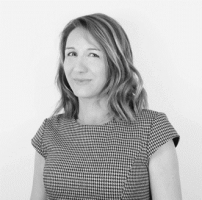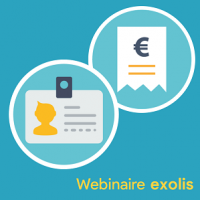Vous souhaitez améliorer vos processus métiers, mais vous vous demandez :
- Quel est l’apport d’une solution numérique dans mon circuit administratif ?
- Est-ce que l’organisation de mon établissement permet la mise en place de la solution exolis ?
- Comment répartir les rôles au sein de mes services ?
- …
Mardi 1er juin 2021, nous organisions avec le Pôle Santé Saint Jean, un webinaire dédié pour répondre à vos questions.
Vous trouverez ci-dessous la rediffusion de la présentation et une foire aux questions reprenant les échanges.
Intervenants :

Sydné Massiera
Directrice générale adjointe
Pôle santé Saint Jean

Grégory Cintas
Directeur Système d’Information
Pôle santé Saint Jean

Christophe Rosso
Co-fondateur
exolis

Gwenaëlle Fleury
Responsable interopérabilité
exolis
Foire aux questions
Circuit administratif
PSSJ – Tout est question d’interopérabilité. Aujourd’hui, au niveau des systèmes d’information, l’ensemble des échanges sont centralisées sur notre EAI. A la fois notre outil DPI, nos outils GAP et notre portail patient communiquent ensemble sur la base d’échanges bilatéraux. Ainsi, toute information saisie dans un logiciel est immédiatement distribuée sur l’ensemble des autres logiciels. Il y a vraiment une unicité de l’information qui nous permet d’échanger sereinement toutes les coordonnées de nos patients.
exolis – En cancérologie, nous travaillons beaucoup avec des patients qui ont des séances de chimiothérapie récurrentes. Nous sommes alors sur une notion un peu différente de la pré-admission. Nous n’allons pas demander aux patients de renseigner toutes ses informations à chaque fois. Nous avons une vue globale du dossier administratif et nous allons simplement demander aux patients d’informer l’établissement d’une modification ou de nouveaux éléments, de carte de mutuelle par exemple, pour avoir des informations à jour et ne pas avoir une tâche fastidieuse à chaque fois quand les venues sont très proches dans le temps.
PSSJ – De notre côté, la mise en place du portail a répondu à une problématique que nous avions depuis très longtemps. Sur le pôle, nous avons différents groupes (MCO, SSR…) qui peuvent utiliser des logiciels métiers cloisonnés. Il fallait alors que l’information du patient puisse être partagée entre les sites. Par exemple, un patient pris en charge en MCO et qui ira en SSR par la suite.
Aujourd’hui, le fait que le patient réalise sa pré-admission sur exolis nous permet, par différents mécanismes d’interopérabilité, d’envoyer les informations et les documents d’identité d’une prise en charge sur les logiciels métiers des différents groupes.
Pré-admission
PSSJ – C’est une très bonne question car la complétude de la pré-admission par le patient est quelque chose d’assez subjectif.
Le portail nous propose un suivi de la complétude. C’est un indicateur de pourcentage qui nous permet de suivre en temps réel, pour le patient et pour nous, la complétude du dossier. Pour autant, il y a beaucoup de patients qui vont remplir 94-95 % du dossier et qui n’iront pas jusqu’au 100% de la complétude. Mais nous allons considérer que la pré-admission est complétée.
Pour gérer ça, nous avons décidé une procédure, permise par l’adaptabilité de notre organisation des admissions :
- Nous regardons si le patient s’est connecté. C’est le premier aiguillage. S’il ne s’est pas connecté, il est renvoyé vers la filière classique. Et s’il s’est connecté, il y aura un traitement de sa pré-admission numérique aux bureaux des entrées à J-2.
- A partir du moment où le dossier est traité, en fonction de l’avancée, nous allons contacter le patient par voie numérique. Nous avons la capacité d’interagir avec le patient directement à travers le portail. Si le patient est arrivé à 95% et qu’il manque un document ou une information, nous allons entrer en contact avec lui pour lui demander si c’est possible de compléter.
- Si le document ne peut être transmis dans les temps, le rendez-vous est conservé et nous demandons au patient de le ramener le jour J ou alors nous essayons de le récupérer de notre côté si nous en avons la capacité.
Ainsi, c’est assez difficile de dire si l’admission est complète. Pour autant, nous considérons le portail comme un service supplémentaire que nous offrons et nous nous adaptons en fonction de l’usage qu’en fait le patient.
exolis – La réponse à cette question dépend du circuit de chaque établissement. C’est aussi là la valeur ajoutée d’exolis : c’est de s’adapter à votre organisation. Chaque établissement dispose d’un circuit administratif propre, qui varie énormément en fonction de ses process et de ses circuits.
exolis – Ce qui est important c’est de bien confier son rôle à chaque logiciel. Le portail patient, c’est la vitrine et la capacité de communication avec le patient. Les logiciels de gestion administrative font tout le métier derrière, l’ensemble des fonctionnalités de gestion du séjour, de la facturation…
Le tout est de définir la bonne frontière. Nous vous permettons de décider en fonction du contexte, et même du type de champs. Ex : est-ce une information modifiable par le patient (donc directement dans le logiciel GAP), est-ce une information intégrée après validation (avec un sas de validation dans notre outil back office de demande) ou est-ce une information non modifiable comme les traits d’identité ?
Tout ceci se met en musique en fonction du choix organisationnel, du choix de gestion des données présentes ou non dans le SI.
PSSJ – Globalement, nous récupérons l’ensemble des informations saisies par le patient dans nos outils métier :
- les traits stricts du patient,
- tout ce qui concerne sa situation (état civil et coordonnées),
- l’ensemble des personnes de confiance, les personnes à prévenir
- l’ensemble des documents transmis par le patient.
exolis – Cela ne dépend pas que d’exolis, mais aussi des acteurs et de l’implication de la direction. Dans un cas classique, nous allons parler de 3 à 4 mois. L’implication forte des différents acteurs métier a permis au Pôle Santé Saint Jean d’avoir des choix rapides, ce qui a permis une implémentation rapide du parcours. Et à partir de là, nous démarrons et nous construisons et finalement nous améliorons. Le plus important est de cibler une organisation de départ suffisamment cohérente, et après de réajuster, modifier en fonction des retours terrains. C’est ce qui permettre d’arriver à un parcours efficient.
PSSJ – Aujourd’hui, le patient repasse toujours par le bureau des entrées. C’est un point d’amélioration qu’il nous reste encore à mener. Mais il y a des raisons : des montants à régler, des dépassements d’honoraires… Mais nous avons actuellement une réflexion autour des bornes d’accueil proposées par exolis, qui permettrait de finaliser l’admission.
Toutefois, même si le patient repasse au bureau des entrées, le temps d’attente est drastiquement diminué.
exolis – Chaque établissement définit son organisation cible et adapte la solution en fonction. Le patient peut être dirigé vers le bureau des entrées ou directement dans les services selon le type de rendez-vous, le taux de complétude du dossier ou encore le lieu de rendez-vous. Dans tous les cas, un contrôle visuel du patient reste indispensable le jour J.
Avec notre solution, nous évitons aux patients de venir sur place au préalable et de gagner du temps à son arrivée. Avec le temps, nous espérons amener un contrôle d’identité numérique complémentaire.
Des files d’attentes particulières peuvent être créées pour les patients connectés, avec des contrôles plus simples et pourquoi pas avec une borne interactive à terme.
Paiement en ligne
PSSJ – Pour la partie plateforme bancaire, ce n’est pas là où il y a les plus grosses difficultés. C’est le travail d’exolis qui a été de qualité et qui a fait que ça s’est bien passé.
La seule chose qu’il faut prévoir c’est d’avoir le bon contrat avec sa banque et d’avoir contractualiser la possibilité de mettre en place une plateforme internet de paiement. Derrière ça, l’intégration avec exolis s’est faite sans problème.
Souvent, les banques donnent accès en amont à deux plateformes, celle de production et celle de recettes, qui permettent de réaliser la batterie de tests au niveau de l’intégration. Et ensuite, vous pouvez basculer sur la plateforme finale.
exolis – Il faut néanmoins prendre le temps d’analyser les processus métier, tout comme pour la préadmission. Il est fort probable que vous vous retrouviez à coordonner plusieurs acteurs (éditeurs) pour automatiser tout le circuit de facturation.
Interopérabilité
exolis – Quand un document patient est ajouté sur l’application, il est transmis automatiquement vers le système d’information via un flux standardisé HL7.
Pour entrer davantage dans le détail, chez exolis, nous pouvons nous adapter à ce qui est reçu dans le système d’information, que ce soit des flux HL7 ORU ou HL7 MDM. Il faut en rediscuter au moment du projet, mais dans chaque cas nous nous basons sur des normes pour retransmettre ces documents-là.
La seule chose qu’il faut prévoir c’est d’avoir le bon contrat avec sa banque et d’avoir contractualiser la possibilité de mettre en place une plateforme internet de paiement. Derrière ça, l’intégration avec exolis s’est faite sans problème.
Souvent, les banques donnent accès en amont à deux plateformes, celle de production et celle de recettes, qui permettent de réaliser la batterie de tests au niveau de l’intégration. Et ensuite, vous pouvez basculer sur la plateforme finale.
exolis – Aujourd’hui, nous sommes interfacés avec tous les grands logiciels classiques du marché. Sur la partie interopérabilité, c’est très rapide. En deux sessions de travail, nous échangeons les paramètres qui vont permettre d’envoyer et de recevoir les fichiers. Nous nous mettons d’accord sur les formats utilisés et les informations qui seront présentes dedans. S’il n’y a pas de spécificités liées aux formats ou aux informations, il n’y a alors aucun souci pour faire une intégration très rapide.
exolis – Chez exolis, nous avons à cœur que nos outils soient dans l’écosystème national. C’est indispensable et ça va le devenir de plus en plus au fur à mesure du temps, notamment avec l’Espace National de Santé (ENS) qui va arriver très rapidement.
Nous sommes en train d’intégrer différentes briques d’authentification, que ce soit France Connect ou itsme en Belgique. Différents outils et différentes méthodes qui vont permettre d’utiliser l’identité numérique comme point d’entrée dans nos outils.
exolis – Nous savons nous connecter aux LDAP des établissements pour faciliter la connexion du personnel soignant.
Utilisation patients
exolis – En se basant sur les retours d’expérience de l’ensemble des projets que nous avons pu mener en 5 ans, que ce soit sur le volet administratif ou médical, l’âge moyen est de 55 ans. Mais il va surtout dépendre de l’âge moyen de l’établissement.
Si la question est posée afin de connaitre l’adhésion des personnes âgées, il faut savoir que jusqu’à 75 ans environ, nous n’avons pas de biais lié à l’âge par rapport à l’adhésion. Nous avons une adhésion à peu près constante de 18 à 75 ans. Effectivement, au-delà de 75 ans, l’adhésion diminue.
Avec l’âge, nous constatons surtout une utilisation plus forte de la plateforme web par rapport aux applications mobiles et une augmentation de l’utilisation par les aidants et l’entourage. Cela permet une prise de relais et une utilisation relativement correcte et intéressante.
Les PREMs et les PROMs sont des questionnaires standardisés qui permettent de mesurer le vécu du patient. C’est un point clé.
Chez exolis, nous proposons petit à petit des questionnaires standardisés paramétrables dans l’outil pour pouvoir récupérer le ressenti du patient. Le taux de remplissage est très bon puisqu’une fois le patient connecté, il est facile pour lui de répondre ou d’être relancé si besoin.
Nous sommes prêts pour la démarche des PREMs et nous sommes convaincus qu’ils permettront des indicateurs plus fins sur le vécu du patient, retranscrit par lui-même.







